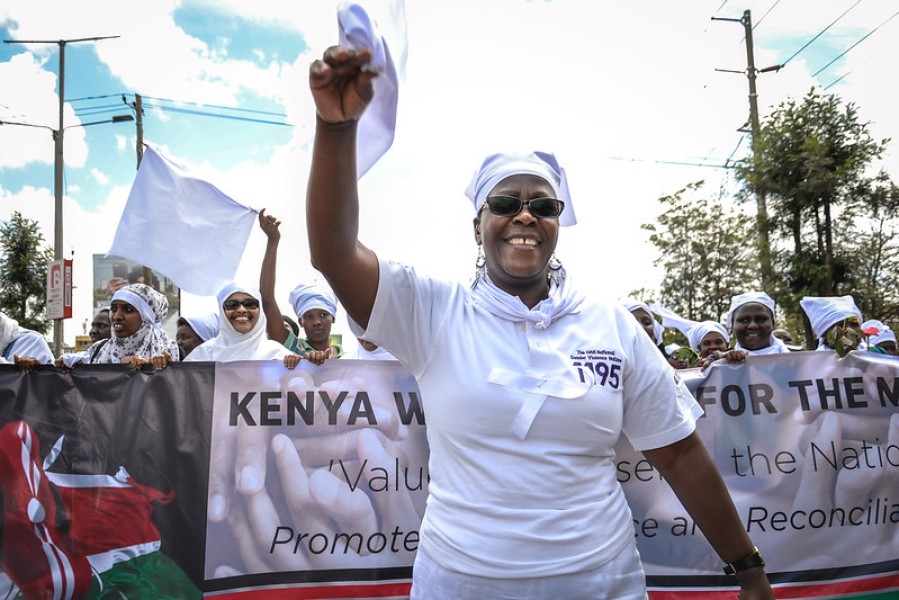Thousands took to the streets across Kenya on January 27 following the gruesome slaying of more than a dozen women to denounce violence against women and demand action to end it. Protesters later gathered in Nairobi on February 14 for a Valentine’s Day vigil for the more than 30 women murdered in the country so far this year and to pressure the government to declare femicide and violence against women a national emergency and to establish a commission to address these crimes and thereby break the cycle of impunity. These efforts are laudable, if not inspiring. However, physical and sexual violence against women and femicide—at times perpetrated by law enforcement officers who are meant to protect them, as enshrined in Kenya’s 2010 Constitution—has persisted in Kenya for decades.
As per the findings of the 2008 Truth, Justice and Reconciliation Commission of Kenya (TJRC), sexual and gender-based violence (SGBV) including gang rape, sexual assault and torture, sexual slavery, and forced genital mutilation has long been a problem in the country, particularly during times of conflict. This squares with the prior findings of the 2007 Commission of Inquiry into the Post-Election Violence (CIPEV), which documented the unprecedented SGBV committed during the 2007 post-election violence that shook Kenya. Both the CIPEV and TJRC condemned a culture of impunity in Kenya and pointed to the failure of the government to hold perpetrators in law enforcement accountable. As the TJRC wrote in Chapter 4 of its final report, “despite evidence of sexual violence perpetrated by state security agents during security operations, there have been few if any investigations, much less prosecutions, of those responsible.’’
Moreover, according to the TJRC’s findings, despite having ratified a myriad of international human rights instruments and enacted related pieces of domestic legislation regarding sexual violence, the Kenyan government has failed to fully implement such legislation, exposing Kenyan women and girls further to SGBV and denying the resultant victims access to justice. Not only must the Kenyan government take concrete steps to punish perpetrators of SGBV, it must implement the TJRC’s recommendations related to the provision of reparation for the victims.
The organizers of the two protests succeeded in bringing much-needed attention to the crisis of femicide and violence against women in Kenya. For nearly two decades, local survivor-led organizations and networks have indefatigably sought to end SGBV and the impunity for these crimes as well as acknowledgment and redress from the government. It has been 17 years since the post-election violence rocked Kenya and 11 years since the TJRC handed its final report to the then president. The government should not wait any longer to implement the TJRC’s recommendations on reparations and access to justice and finally reward these sustained advocacy efforts.
_________
PHOTO: Fanis Lisiagali, Executive Director of Healthcare Assistance Kenya, leads a White Ribbon Campaign march in Nairobi, Kenya, on October 24, 2017, and promotes her agency's rapid response call center hotline which responds to violence against women in elections. (Carla Chianese/International Foundation for Electoral Systems via Flickr)

